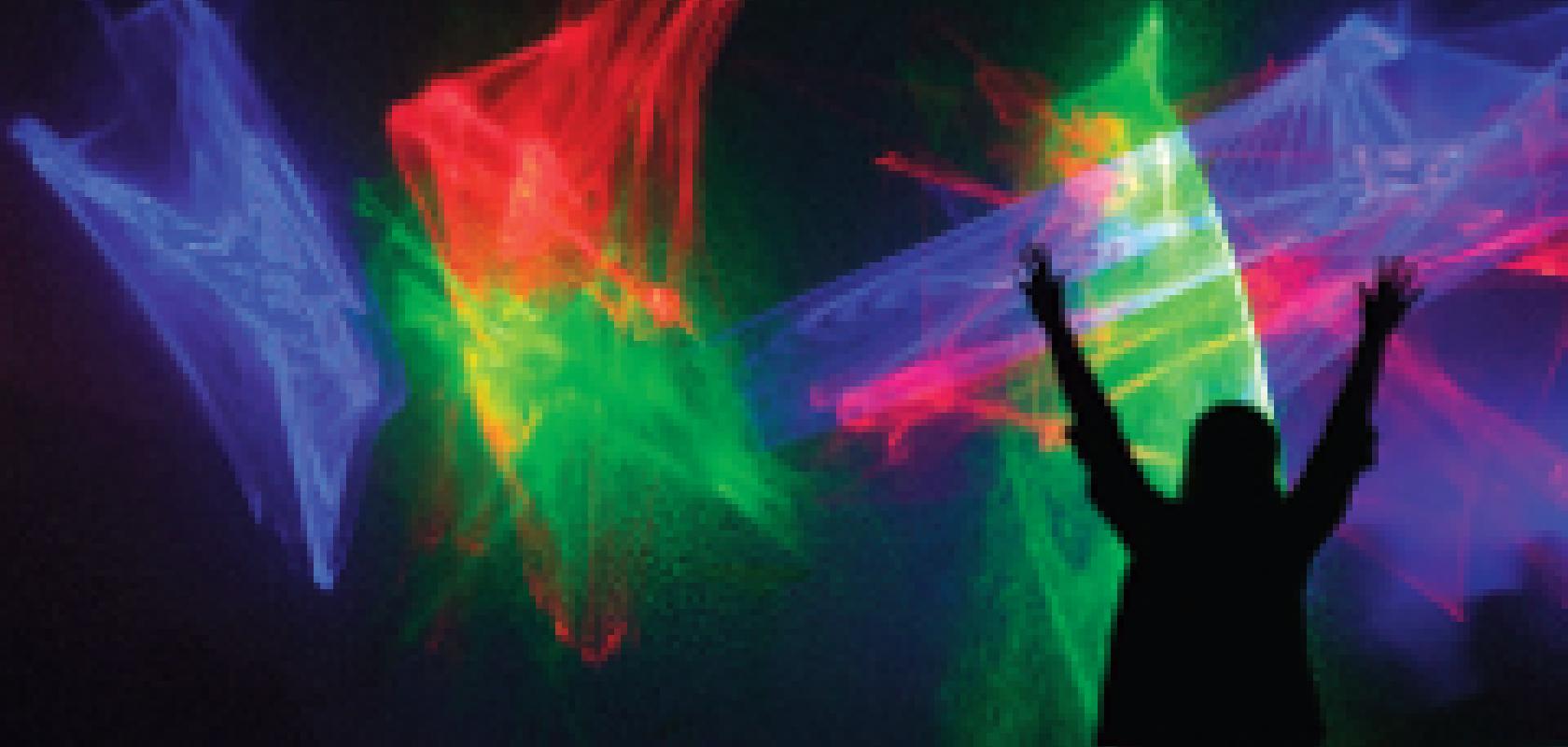Laser light shows might be familiar from huge sporting events, such as the opening ceremony of the Olympic Games, or as part of the pyrotechnics at rock concerts, but using the laser as an artistic tool is less common. Mike Gould describes himself as one of the few laser artists working in the USA and his latest art installation – L is for Laser – can be seen at the Alden B Dow Museum of Science and Art in Midland, Michigan. He will also be presented with the Innovative Application award at the International Laser Display Association (ILDA) conference, which takes place in Aalen, Germany, from 4 to 7 November. The prize will be awarded for his ‘Status 10’ laser sculpture, a 4,000 square foot indoor laser display in the lobby of the Marriott hotel in Grand Rapids, Michigan.
Speaking about his museum installation, Gould said: ‘It’s my first major gallery exhibit, so I’m very excited about it. I am one of the few people doing actual laser art... I’ve spent 10 months building all the projectors and making it all come alive.’ The gallery opened at the beginning of October.
Gould’s exhibit is made up of five art pieces filling the inside of one of the gallery halls. Seventeen diode lasers housed in metal lunch-boxes project onto the walls and ceiling; one of the displays is interactive, with the lasers controlled by a Microsoft Kinect sensor to translate the movement of the visitors into speed and brightness of the lasers.
‘The gallery is fairly dark so I didn’t need very bright lasers,’ he said. He used 700mW red diodes, 150mW greens, and 600mW blue laser diodes.
Gould creates many of his effects, including an effect called lumia, which is a whispy pattern, by shining laser light through textured glass. He experiments with various different types of glass, cutting out makeshift lenses and mounting them onto motors (on custom-built circuit boards) to move through the light. ‘The trick with lumia is, you want it [the glass] to go as slow as possible,’ he said.
Gould also experiments with the housings of his laser projectors – along with lunch-boxes, he’s built lasers into vintage slide projectors, old stage lighting, and 1930s Electrolux vacuum cleaners. ‘My artistic philosophy is: “let’s do something cool with the lasers, but let’s also do something cool with the enclosure that houses the laser”,’ he said.
At the end of October, Gould and his team are designing the lighting for an Anime festival called Youmacon, in Detroit, in front of 3,000 people. They are also involved in another university show in November.
Diodes steal the show
Gould uses diode lasers in his work, which, he commented, has changed the laser entertainment industry completely. Pavol Kubošek, CEO of Kvant, noted that in the past laser equipment was heavy, difficult to install, with high power consumption and water cooling. He said that, at that point, the potential for laser shows was limited because of the price of the laser equipment and how difficult it was to operate. Based in Bratislava, Slovakia, Kvant manufactures laser systems for light shows and installations.
Kubošek added that, now, laser systems for shows are based on semiconductor diodes, which are smaller, lighter, lower energy consumption and cheaper. Gould also noted that the laser diodes are more powerful than they used to be – he has bought a 3W yellow laser for a new installation he is in the process of designing.
Kubošek, who has been working on systems for laser displays since 1995, is also being honoured by ILDA with the organisation’s Career Achievement Award, which will be presented to him at the conference in Aalen.
Kvant’s systems have been used in TV shows, exhibitions and outdoor shows. It provided lasers for the audiovisual festival, Vltava Zije, which took place in June this year in Prague, Czech Republic. The show included laser projectors, video projectors, and a water screen, which accompanied art performances from acrobats and jetpack riders. Kubošek remarked that the latest laser system techniques are designed for multimedia shows where combinations of different media are combined for spectacular live events. Kvant has also been working on other technology, such as a spheric projector, which combines optical accessories, a laser projector and a projection ball.
Laser safety is a big consideration for laser shows and for techniques like audience scanning, where beams are slowly scanned above the heads of the audience in a kind of ceiling of light, there are strict rules as to the height of the beams and the speed of the projection. The danger comes from scanning laser light over too small an area or where the beam has stopped moving altogether, because the projector has failed, for instance. Gould commented that his shows were mostly lower power and care was taken to project the lasers above three metres in height.
As higher power laser diodes become available there is the potential to project displays over longer distances onto distant objects, commented Kubošek. He also sees an increase in the use of the laser for architectural lighting. Software also plays a big role and user-friendly software interfaces combined with sophisticated laser projectors mean show designers are now engineering highly complex multimedia performances.
 Greg Blackman is the editor for Electro Optics, Imaging & Machine Vision Europe, and Laser Systems Europe.
Greg Blackman is the editor for Electro Optics, Imaging & Machine Vision Europe, and Laser Systems Europe.
You can contact him at greg.blackman@europascience.com or on +44 (0) 1223 275 472.
Find us on Twitter at @ElectroOptics, @IMVEurope, and @LaserSystemsMag.


